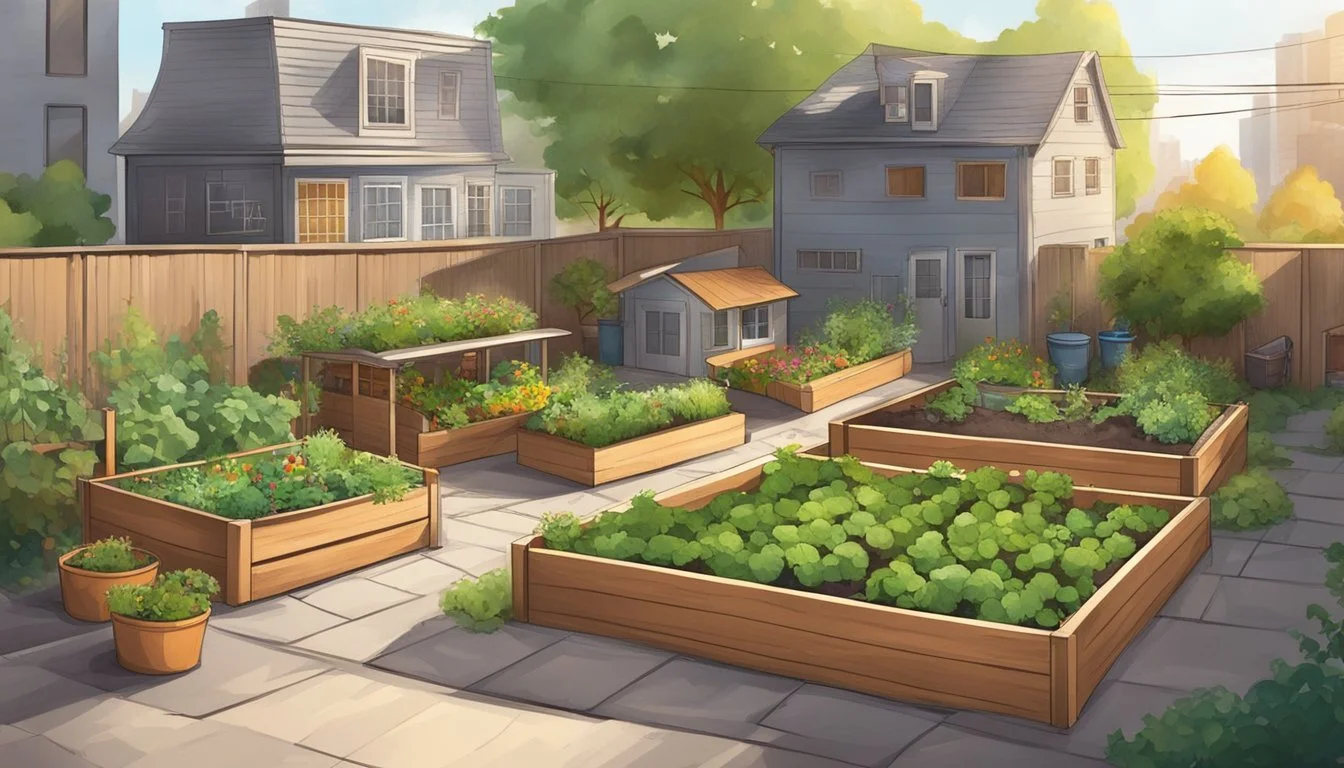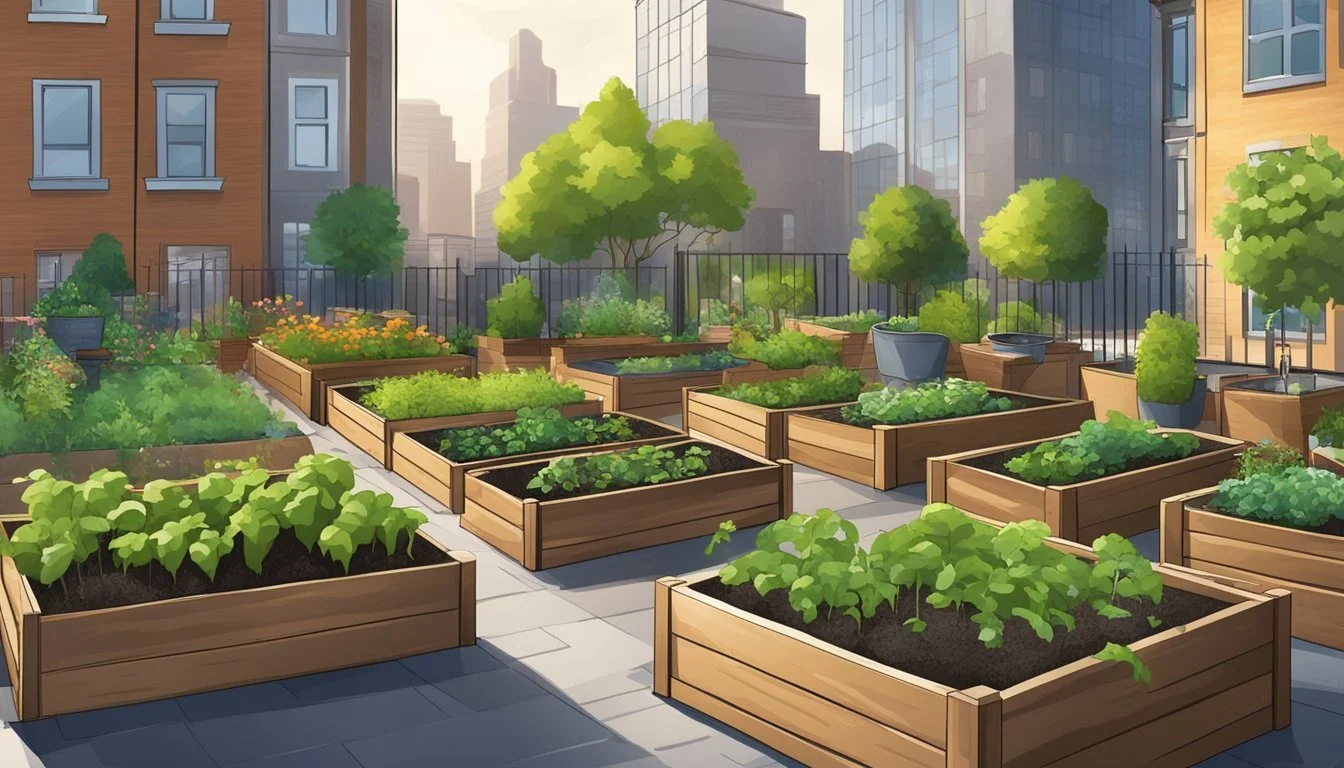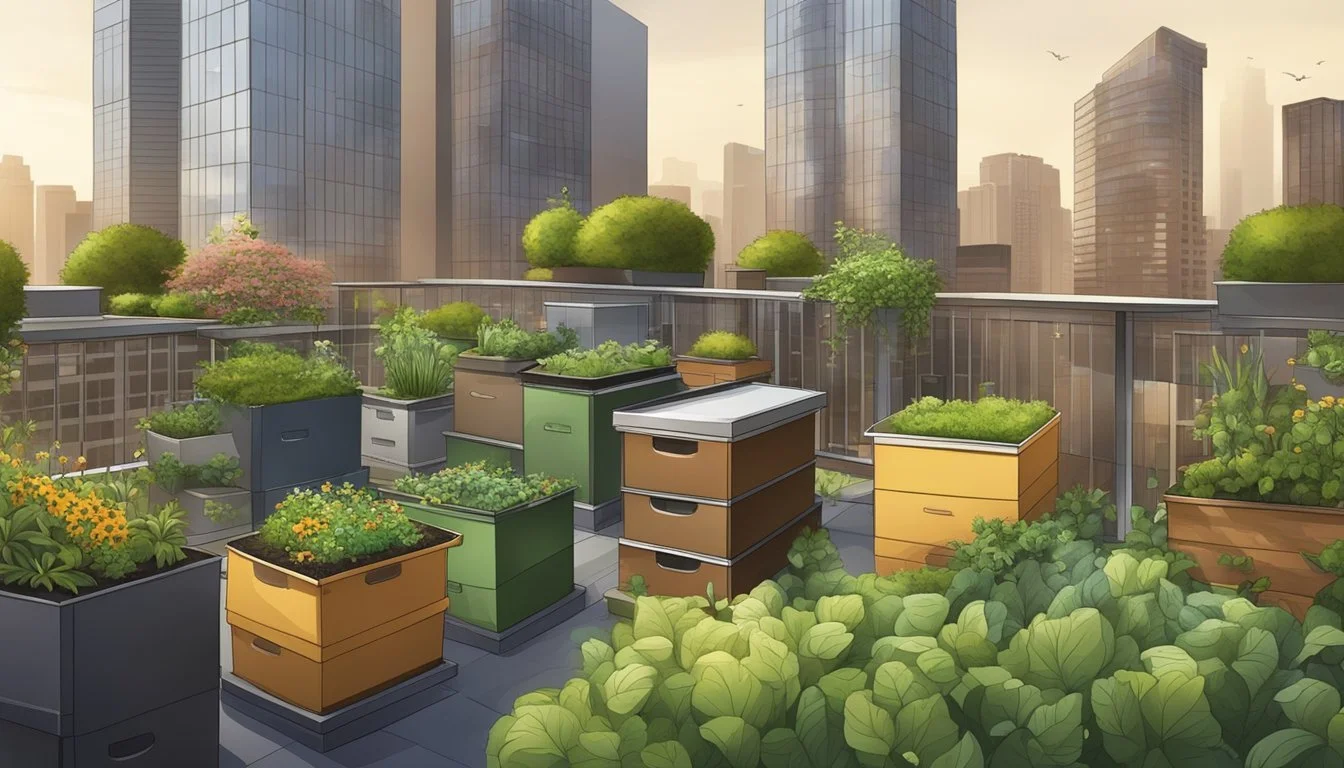The Challenges of Homesteading in Urban Environments
Navigating Space and Regulations
Urban homesteading represents a growing movement where individuals and families aim to lead a more sustainable, self-sufficient lifestyle right in the heart of cities. This contemporary take on the traditional homestead challenges the notion that one needs wide-open spaces to engage in practices like gardening, preserving food, and keeping small livestock. With the rise of environmental awareness and a push towards a greener lifestyle, urban dwellers are transforming balconies, rooftops, and community lots into vibrant spaces of production and ecological responsibility.
The journey into urban homesteading, however, is not without its obstacles. Limited space remains a significant hurdle, forcing urban homesteaders to be creative with vertical gardens, container planting, and multi-functional areas. Navigating zoning laws and municipal regulations presents another layer of complexity, as many cities lack clear guidelines for practices such as keeping bees or chickens, which are considered staples of self-sufficiency. Despite these challenges, urban homesteaders are finding innovative ways to cultivate their own food and reduce their environmental footprint.
Embracing sustainability within an urban setting also leads to a deeper understanding of resource usage and the impact of daily living on the environment. Advocates of urban homesteading often engage in composting, waste reduction, and water conservation, which not only benefit their own household but also contribute to a larger cultural shift towards ecological mindfulness. By overcoming the inherent challenges of urban homesteading, individuals are crafting resilient lifestyles that could reshape city living for future generations.
Understanding Urban Homesteading
Urban homesteading encapsulates the adaptation of traditional homesteading principles to the unique constraints and opportunities of urban living, focusing on sustainable lifestyle and self-sufficiency.
Defining Urban Homesteading
Urban homesteading involves individuals or communities embracing practices of self-sufficiency within city environments. It typically includes growing food, raising small livestock, conserving energy, and minimizing waste. Key components of urban homesteading often incorporate:
Gardening: Producing food on patios, rooftops, or community gardens.
Water Collection: Utilizing rain barrels for water conservation.
Renewable Energy Sources: Implementing solar panels to harness natural energy.
Waste Reduction: Composting to manage organic waste efficiently.
Historical Background and Evolution
The concept of homesteading has its roots in governmental policies that gave land to settlers for cultivation. In modern times, it has morphed into the urban homesteading movement, which is a response to the space limitations and resource consumption typical of city living. This adaptation is often seen as a return to traditional practices but contextualized for an urban existence, aiming to reduce the environmental footprint and enhance community engagement.
Urban Vs. Rural Homesteading
Comparing urban and rural homesteading highlights the differences shaped by location. Rural homesteaders may have more space but face challenges such as fewer nearby resources and community members. In contrast, urban homesteaders face space limitations but benefit from proximity to networks, markets, and educational resources. They also heavily focus on community involvement and support, which can lead to innovative solutions for sustainable living in dense living conditions.
Benefits of urban homesteading include:
Increased food security
Lower ecological impact
Enhanced sense of community
Educational opportunities for urban dwellers about food production and sustainability
Assessing the Urban Environment
Before embarking on urban homesteading, one must carefully assess the constraints and opportunities of the urban environment. This involves analyzing the available space, understanding legal frameworks, and tapping into community resources for support and education.
Space and Spatial Planning
Urban homesteading often contends with limited space. Assessing space means considering both horizontal and vertical dimensions. Vertical gardening becomes a critical strategy in maximizing space for crops. Compact spaces necessitate creative layout planning to ensure efficient use of each square foot for growing, raising small livestock, or installing sustainable technologies.
Local Regulations and Zoning Laws
One of the most significant legal challenges for urban homesteaders involves navigating zoning laws and local regulations. These laws determine what activities are permissible on a given property. Prospective urban homesteaders must research and comply with these regulations to avoid legal complications, which may cover facets from gardening to keeping chickens or bees.
Community Resources and Support
Building a sense of community is integral to urban homesteading. Community resources such as educational workshops, seed exchanges, and shared equipment can be pivotal for success. Access to these resources fosters a collaborative environment, enabling urban homesteaders to gain knowledge and support, which is essential in densely populated areas where individual efforts alone might not be sufficient.
Optimizing Limited Space
Urban homesteaders often face the challenge of making the most of limited areas. Innovative methods such as container and vertical gardening, hydroponics, and carefully selected plants and livestock can significantly enhance the productivity of small spaces.
Container and Vertical Gardening
Container gardening allows urban homesteaders to utilize pots and other containers to grow a variety of vegetables and herbs in confined spaces. By growing plants in containers, they can manage soil quality and water use more effectively. Vertical gardening takes advantage of upward space on walls and trellises, increasing plant density and yield per square foot. This method proves especially useful for those with tiny yards or balconies, maximizing the growing season within a compact area.
Hydroponics and Aquaponics
Hydroponics involves growing plants in a water-based solution, a space-efficient method that can produce significant yields without the need for traditional soil. Hydroponic systems are highly controllable and can conserve water by recirculating it. Aquaponics combines this approach with raising fish, whose waste provides nutrients for the plants. This closed-loop system underscores sustainability by integrating food production and waste management.
Choosing the Right Plants and Livestock
Selecting the right types of vegetables, herbs, and small livestock is crucial for urban homesteaders working with limited space. Dwarf or mini varieties of vegetables are more suited for small areas, as they require less room to grow. Herbs are highly recommended for urban gardens due to their compact nature and ability to thrive in containers. When considering sustainable practices for protein, small livestock such as rabbits and quail (What wine goes well with quail?) are more appropriate as they occupy less space and can be raised ethically in urban settings.
Creating a Sustainable Ecosystem
In urban homesteading, integrating sustainability is key to reducing one's ecological footprint and promoting sustainable living. By focusing on effective waste management, water conservation, and energy solutions, urban dwellers can cultivate resilience and self-sufficiency within the city.
Composting and Waste Management
Composting is fundamental to creating rich compost that revitalizes urban soil quality. By turning organic waste into valuable fertilizer, it minimizes landfill contributions and facilitates a nutrient-rich foundation for urban gardens. Urban homesteaders can utilize methods like:
Bokashi composting: An anaerobic process suitable for small spaces.
Vermicomposting: Uses worms to break down organic waste efficiently.
These practices not only produce beneficial soil amendments but also play a crucial role in reducing waste and enhancing sustainability.
Water Conservation Techniques
With limited access to natural water sources, urban homesteaders can adopt rainwater harvesting systems to capture and utilize rainwater. Techniques such as:
Rain barrels: Connecting to downspouts to collect and store rainwater.
Greywater systems: Reusing water from sinks and showers for irrigation.
These approaches conserve water and help maintain a sustainable garden ecosystem, crucial for sustainable living in densely populated areas.
Renewable Energy in Urban Settings
Incorporating renewable energy sources like solar panels transforms the energy profile of an urban homestead. By harnessing the power of the sun, residents can:
Reduce reliance on non-renewable energy sources.
Decrease overall energy expenses.
Additionally, investing in energy-efficient appliances can further reduce the homestead's energy consumption, cementing a commitment to ecological and economic sustainability.
Agriculture and Food Production
To thrive in urban homesteading, a comprehensive approach to food production is crucial. This encompasses gardening, raising animals, and maintaining soil quality.
Gardening for Food Production
For many city dwellers, gardening is a gateway to growing food. Even in limited spaces, vegetable gardens can flourish. Container gardening and vertical planting allow for an array of vegetables and fruits to be cultivated. Varieties that require less space, such as tomatoes, peppers, and leafy greens, are particularly well-suited for urban settings.
Raising Animals in the City
Urban homesteaders can achieve a degree of self-sufficiency by raising animals like backyard chickens for fresh eggs. While not all cities permit keeping chickens, those that do often have specific regulations to ensure the health and safety of both the animals and the community. Additionally, keeping bees in urban areas can aid in pollination and provide honey, although this also is subject to local laws and requires significant knowledge to manage properly.
Ensuring Soil Quality and Plant Health
Soil quality is fundamental for a successful gardening endeavor. Testing for fertility and pH levels is essential for plant health. Amending the soil with compost and organic matter can improve its nutrient content and structure, while also increasing its ability to retain water. Maintaining healthy soil is not just about adding nutrients; it's also about sustaining a living, balanced ecosystem below the surface.
Embracing the Urban Homesteading Lifestyle
Urban homesteading invites city dwellers to transform their way of life by integrating principles of sustainability, self-sufficiency, and environmental consciousness within the urban environment. It emphasizes the practicality of homesteading that balances modern urban living with the age-old practices of cultivating food, conserving resources, and enhancing the well-being of individuals and communities.
Economic and Health Benefits
Urban homesteading can offer significant economic benefits such as cost savings on groceries through the cultivation of fruits and vegetables at home. By growing their own food, urban homesteaders may reduce their dependence on commercial food sources and minimize expenses associated with purchasing fresh produce. Furthermore, the health benefits are double-fold; not only does the access to fresh, organic food bolster physical health, but the activities related to gardening and maintenance promote mental well-being.
Socio-Environmental Advantages
Adopting an urban homesteading lifestyle positively impacts the environment by reducing an individual’s carbon footprint. Homesteaders who engage in practices like composting, water harvesting, and utilizing renewable energy become proponents of environmental stewardship. These activities contribute to a smaller environmental impact and advocate for a community-oriented approach to sustainable living, which may inspire neighbors to follow suit and create a collective push towards environmental consciousness.
Challenges and Overcoming Barriers
Despite its many benefits, urban homesteading comes with its share of challenges, from legal restrictions to space constraints. Yet, with resilience and creative problem-solving, these obstacles can be surmounted. Adapting techniques to fit small spaces like balconies and rooftops, and utilizing vertical gardening methods are ways urban homesteaders have shown overcoming challenges is possible. Through education and community support, individuals can navigate regulations and collaborate to foster shared spaces for urban agriculture, illustrating that urban homesteading is not only feasible but also thriving in the face of adversity.
Practical Strategies and Practices
Homesteading in urban environments requires innovative approaches to sustainability and self-sufficiency. Optimizing available space and resources is crucial for urban homesteaders to achieve food security and embrace sustainable living practices.
Food Preservation and Storage
Urban homesteaders often confront space limitations. Maximizing shelf life and nutritional value of produce is essential. Canning is a useful technique for preserving fruits and vegetables, ensuring food security by creating a stockpile of nutritious, homegrown food. Freezing fresh produce when it's abundant allows for enjoyment year-round. Properly sealed and labeled jars and containers help organize limited storage space effectively and maintain the quality of preserved goods.
Homemade Products and DIY Projects
Creating homemade products such as soaps, cleaning agents, or textiles not only cuts down on waste but also fosters a sustainable lifestyle. Engaging in DIY projects serves as an educational experience and reduces dependence on store-bought items. By recycling materials, urban homesteaders can craft tools and decorations, adding personal value to their homes. These practices promote a sustainable lifestyle and can inspire others in their community to consider similar actions.
Fostering a Community of Homesteaders
Building a community around urban homesteading encourages community engagement and knowledge exchange. Sharing surplus produce, seeds, or homemade goods not only strengthens relationships but also improves the overall sustainability of the neighborhood. Workshops can be organized to teach sustainable living practices, increasing collective knowledge and empowering others to start their own homesteading initiatives. Through community efforts, urban homesteaders create a supportive, resilient network that thrives on the principles of sharing and collaboration.
Conclusion
Urban homesteading represents a commitment to a more self-reliant, sustainable form of living, even within the limitations of city life. It requires creativity and resilience, yet many find it a path to a fulfilling life. By practicing urban agriculture, city dwellers cultivate not only food but also a connection with the environment and their community.
Residents often overcome spatial constraints through innovative solutions like vertical gardens and balcony containers. These methods underscore the adaptability central to urban homesteading. Additionally, composting and rainwater harvesting further reflect the sustainable practices typifying this lifestyle.
The impact of urban homesteaders goes beyond personal gain. They demonstrate how individuals can contribute to larger environmental and social well-being. Through education and example, these urban farmers instill values of sustainability and self-sufficiency in others.
Homesteading in the city may present its challenges, but the advantages unfold in the quality of life enhancements it can offer. Those who embark on this journey promote a resilient urban fabric, capable of withstanding various economic and environmental changes.
In this context, urban homesteaders play a pivotal role. They are not just growing vegetables but nurturing a new paradigm wherein each small, green space can be a powerful instrument for change.








